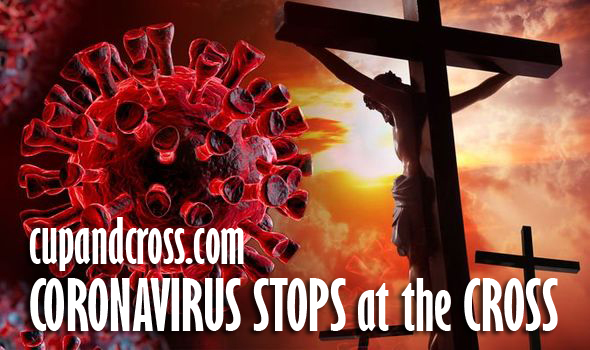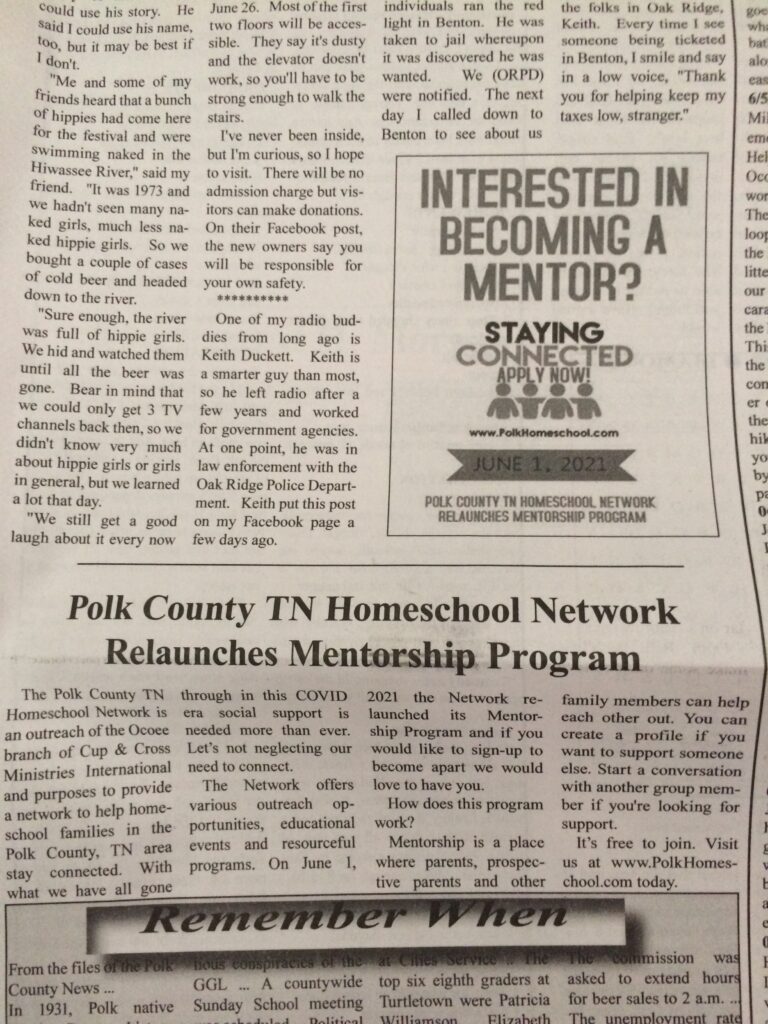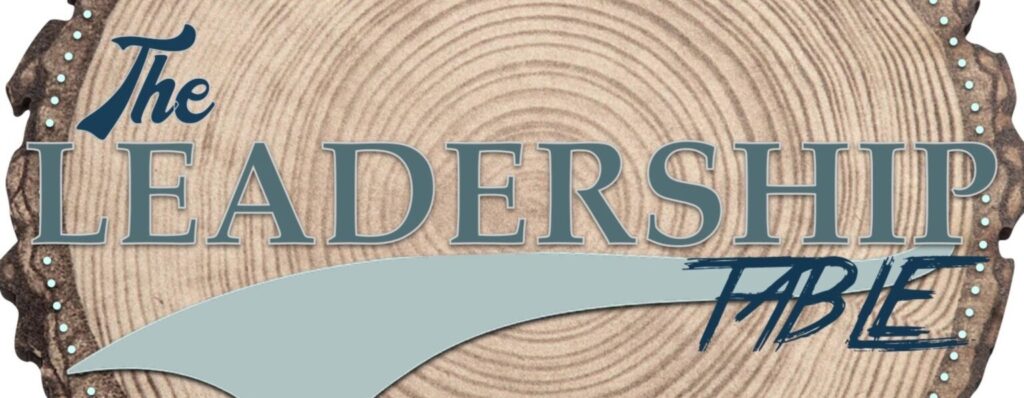“Keep on Stinkin’: Appalachian Ramp History Guide & Cookbook” a New Release by Cup & Cross Ministries
A heartwarming collaboration between a mother and her 11-year-old daughter has resulted in a one-of-a-kind cookbook and history guide celebrating the wild, flavorful ramp. Titled Keep on Stinkin’: Appalachian Ramp History Guide & Cookbook, the book blends delicious recipes with the fascinating cultural and historical journey of this beloved wild leek, showcasing the duo’s creativity and shared passion for food and storytelling.
Ramps (Allium Tricoccum), also known as wild leeks, garlic or onions or even ramsons or wood leeks, are a native North American bulbous perennial flowering plant in the amaryllis family. They have played an essential role in Appalachian and Indigenous diets for centuries. They are celebrated for their pungent flavor, which is a blend of garlic and onion, and their brief, highly anticipated growing season each spring.
Keep on Stinkin’ explores Appalachia’s rich cultural history with a food journey through the ages. This cookbook features a brief history of ramps along with nearly 60 Appalachian-inspired recipes showcasing this wild plant as the star ingredient. These dishes honor traditional mountain cooking with a focus on foraged ingredients, cast-iron skillets, and rustic flavors. Written by Kathryn Donev and her daughter Kariyana, Keep on Stinkin’ is an intergenerational cookbook celebrating their shared love for cooking. Kathryn is an avid home cook who has authored several globally available cookbooks while Kariyana is a young food enthusiast with a talent for crafting bold, unique flavor combinations.
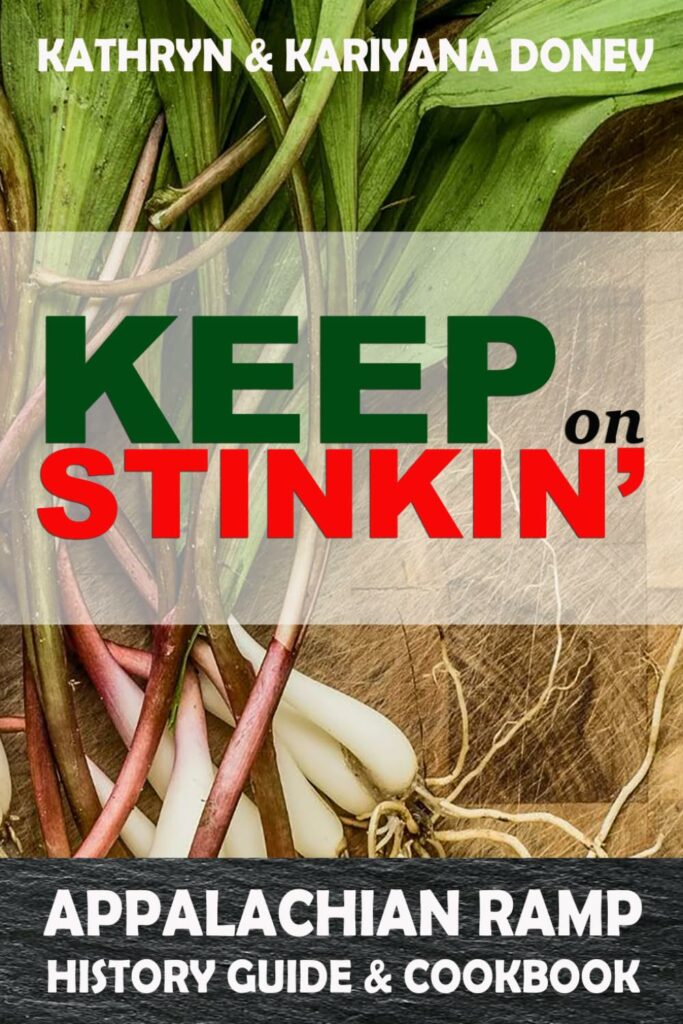
Version 1.0.0
The Cross: A Message of Salvation and Revolution
For every Christian, the crucifixion bears one ultimate meaning: salvation. And not just salvation through the cross, but through the death on the cross with multiple layers of significance. It is the fulfillment of Messianic prophecy, the undeniable proof of a sovereign God acting within the drama of human history, and an unprecedented political manifesto revealing the enduring power of faith.
The practice of crucifixion dates back to the 9th century B.C., introduced by the Assyrian king Shalmaneser as a brutal punishment for criminals. Offenders were bound, crucified alive, and raised high to be seen by the public—a horrifying spectacle designed not merely to punish but to sow fear in all who dared challenge the authority of the empire. The true power of this punishment lays not in the death it brought, but in the prolonged agony and exhaustion preceding it.
Before the rise of the Roman Empire, crucifixion already bore the weight of terror and shame. Under Rome, it became the empire’s most dreadful symbol—a declaration that its might could crush any man, any nation. In 71 B.C., following the failed rebellion led by Spartacus, 6,000 of his captured followers were crucified along the road from Capua to Rome.
Rome had turned crucifixion into a science of torture! Death so brutal that the victim became little more than a piece of bloody meat in the eyes of the soldiers. Flesh was torn by whips embedded with metal, bone, and glass. Blood drained from the body until the organs could not function any longer. The body suffocated slowly, painfully, as breathing ceased and the blood powered into the dry limestone dust. The torment was total!
The condemned were then nailed to rough-hewn wooden beams—hands and feet pierced—then lifted slowly into the air. Death came not instantly, but after three to four hours… or three to four days. The sight of a naked, disfigured body suspended on a cross, wracked with agony, could not go unnoticed by the watching crowd. The criminal had turned into a victim of cruelty, of imperial might and of public condemnation.
This is the scene that Tertullian, an early Christian apologist, identified as the peculiar cruelty of crucifixion. The Roman historian Cicero deemed it a “most cruel and horrifying” punishment, while Josephus described it as the “most pitiable of deaths.” Yet for imperial Rome, the crucifixion was a public proclamation: a terrifying sentence reserved for those who dared to disrupt the order and peace of the ultimate pagan state. All rebels against the Empire met such an end!
Jesus knew that this would be His fate! It was foretold in the prophecies. This was how the true Messiah was destined to die. The four Evangelists describe in vivid detail the trial and crucifixion: Judas received his silver and his judgment; conflicting witnesses marred the court; Pilate washed his hands before the crowd, claiming to find no fault. The soldiers’ beatings, the casting of lots for His garments, the crown of thorns, and the long, agonizing walk to Calvary under the burden of the rough heavy wooden cross—all marked the path of redemption.
His blood stained the narrow streets of Jerusalem! The crowd followed Him to the hill called Golgotha. Those near enough saw the splinters of the Roman-crafted cross soaked in blood. Those farther away heard the hammer strike iron through flesh, followed by screams that pierced the air. Then the crowd hushed as the Roman soldiers began to pull the ropes. The cross was raised upright, wedged into the rocky ground. And on it, standing tall between heaven and earth, hung the reason for our faith, the very source of our salvation. The forsaken Messiah, the wounded Healer, the King condemned by kings, the Lord slain by lords. His hands and feet were nailed, His brows crowned with thorns, His body swollen, bloody, and bare. His blood streamed down the tree, dripping onto the hardened faces of the guards below. For this is how God chose to die for the salvation of the world. But even from the cross, through parched lips and a final breath, the Eternal One continued to speak.
At that moment, in midday darkness, the veil of the temple was torn from top to bottom. It was not the end, but a beginning. The wounded, the outcast, the poor, and the powerless were now invited into His presence!
Five apostles—Andrew, Bartholomew, Peter, Philip, and Simon the Zealot also died by crucifixion, as Christ did. Thousands of early Christians were crucified along Rome’s stone paths. John Foxe, in his Book of Martyrs, writes that crosses, poison, and every imaginable cruelty were employed to eradicate Christians. Not for crimes committed, but for the singular “offense” of believing differently. For the early Church, the cross transformed from a symbol of terror into a banner of faithfulness, even unto death.
By the end of the first century, apologists like Minucius Felix were already linking the cross with Christian identity. In the early third century, Tertullian himself proclaimed it the sign of the Lord. History knows no greater reversal, no more profound political declaration: the symbol of Roman oppression became the symbol of the Christian faith.
The early Church’s message was clear: the pagan empire held no power over faith that rose above death, hell, every kingdom and every ruler. The cross carried a social message too, judging justly and restoring dignity. At Golgotha, the lame walked, the blind saw, the poor found their Father.
The cross bore an economic truth as well: an empire built on slavery cannot hold those made free in Christ. But above all, the message of the cross is spiritual. Earthly power cannot liberate the soul. Only Christ, crucified, can redeem those who give their lives to God!
It is likely that, in our own century, a global power may again seek to assert its might crushing dissenters, thinkers, believers alike through legislative, executive, and judicial force. And perhaps, for a time, it will succeed. But it will not endure! For the word of the cross is a power greater than any empire, earthly or otherwise. Easter is the triumph of faith—the holiday that transforms the enemy’s weapons into instruments of salvation.
Christ is Risen! May God keep us all!
Dony K. Donev, D.Min.
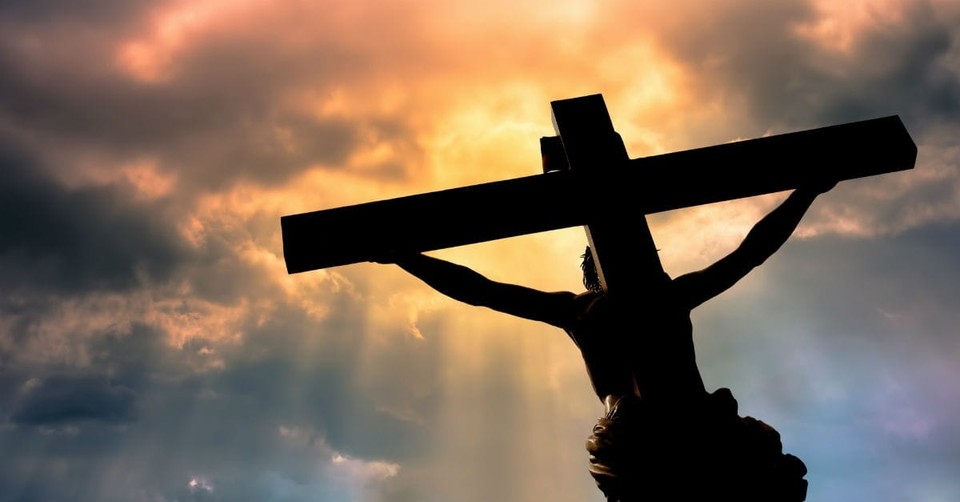
Creation and the Cross
BY HENRY M. MORRIS, PH.D. | THURSDAY, APRIL 01, 1976
The two greatest events in all history are the creation of the world and the redemption of the world. Each of these events involved a great divine Week of work and a Day of rest. Creation Week accomplished the work of man’s formation; the week that is called Holy Week or Passion Week (perhaps a better term would be Redemption Week) accomplished the work of man’s salvation.
Creation Week, which culminated in a perfect world (Genesis 1:31), was followed by man’s fall and God’s Curse on the world (Genesis 3:17). Passion Week, which culminated in the death and burial of the maker of that perfect world, is followed by man’s restoration and the ultimate removal of God’s Curse from the world (Revelation 22:3). A Tree (Genesis 3:6) was the vehicle of man’s temptation and sin; another Tree (I Peter 2:24) was the vehicle of man’s forgiveness and deliverance.
The Two Weeks
It is fascinating to compare the events of the seven days of Creation Week and Redemption Week, respectively. The chronology of the events of Redemption Week has been the subject of much disagreement among scholars, and it is not possible to be certain on a number of the details. The discussion below is not meant to be dogmatic, but only to offer a possible additional dimension to their understanding and harmony. The traditional view that Friday was the day of the crucifixion is further strengthened by the correlations suggested in this study.
(1) First Day. The first day of creation involved the very creation of the universe itself (Genesis 1:1). An entire cosmos responded to the creative fiat of the Maker of heaven and earth. Initially this Space-Mass-Time (i.e., heaven, earth, beginning) continuum was created in the form of basic elements only, with no structure and no occupant (Genesis 1:2), a static suspension in a pervasive, watery matrix (II Peter 3:5). When God’s Spirit began to move, however, the gravitational and electromagnetic force systems for the cosmos were energized. The waters and their suspensions coalesced into a great spherical planet and, at the center of the electromagnetic spectrum of forces, visible light was generated (Genesis 1:3).
In a beautiful analogy, on the first day of Passion Week, the Creator King of the universe entered His chosen capital city (Zechariah 9:9,10; Matthew 21:1-9) to begin His work of redemption, as He had long ago entered His universe to begin His work of creation. Even the very elements He had created (Luke 19:39, 40) would have acknowledged His authority, though the human leaders of His people would not.
(2) Second Day. Having created and activated the earth, God next provided for it a marvelous atmosphere and hydrosphere in which, later, would live the birds and fishes. No other planet, of course, is equipped with air and water in such abundance, and this is strong evidence that the earth was uniquely planned for man and animal life. The hydrosphere was further divided into waters below and waters above “the firmament.” The waters above the firmament (the Hebrew word for firmament means, literally “stretched-out space”) probably comprised a vast blanket of transparent water vapor, maintaining a perfect climate worldwide, with ideal conditions for longevity.
Paralleling the primeval provision of life-sustaining air and water, on the second day of Redemption Week, He entered again into the city (having spent the night in Bethany) and taught in the temple. As He approached the city, He cursed the barren fig tree (Mark 11:12-14) and then, in the temple, overthrew the tables of the money changers (Mark 11:15-19). This seems to have been the second time in two days that He had turned out the money changers (the parallel accounts in Matthew and Luke indicate that He also did this on the first day). Both actions¾the cursing of the fig tree and the cleansing of the temple¾symbolize the purging of that which is barren or corrupt in the Creator’s kingdom. He had created a world prepared for life (air for the breath of life and water as the matrix of life), but mankind, even the very teachers of His chosen people, had made it unfruitful and impure. As physical life must first have a world of pure air and water, so the preparations for a world of true spiritual life require the purifying breath of the Spirit and the cleansing water of the Word, preparing for the true fruit of the Spirit and the true temple of God’s presence, in the age to come.
(3) Third Day. The next day, the sight of the withered fig tree led to an instructive lesson on faith in God, the Lord Jesus assuring the disciples that real faith could move mountains into the sea (Mark 11:20-24). In parallel, on the third day of creation, God had literally called mountains up out of the sea (Genesis 1:9,10).
It was also on this day that the Lord had the most abrasive of all His confrontations with the Pharisees and Sadducees. He spoke many things against them and they were actively conspiring to destroy Him. It is appropriate that His challenges to them on this day began with two parables dealing with a vineyard (Matthew 21:28-32 and Matthew 21:33-43; see also Mark 12:1-11 and Luke 20:9-18), in which He reminded them that they had been called to be in charge of God’s vineyard on the earth, and had failed. Like the fig tree, there was no fruit for God from their service, and therefore, they would soon be removed from their stewardship.
Likewise, the entire earth was on the third day of Creation Week prepared as a beautiful garden, with an abundance of fruit to nourish every living creature (Genesis 1:11,12) and it had been placed in man’s care (Genesis 1:28-30; 2:15). But mankind in general, and the chosen people in particular, had failed in their mission. Before the earth could be redeemed and made a beautiful garden again (Revelation 22:2), it must be purged and the faithless keepers of the vineyard replaced.
This third day of Passion Week was climaxed with the great Sermon on the Mount of Olives in which the Lord promised His disciples that, though Jerusalem must first be destroyed, He would come again, in power and great glory, to establish His kingdom in a new Jerusalem (Matthew 24 and 25; Mark 13; Luke 21). It was appropriate that He should then spend the night following that third day, with the handful of disciples who were still faithful to Him, on the Mount of Olives (Luke 21:37), for the Mount would call to memory that far-off third day of Creation Week when He had drawn all the mountains out of the sea. Also, the Garden of Gethsemane on its slopes, with its little grove of vines and fruit trees, would bring to mind the beautiful Garden of Eden and the verdant world He had planted everywhere on the dry land on that same third day. Because of what He was now about to accomplish at Jerusalem (Luke 9:31), the ground would one day be cleansed of its Curse, and all would be made new again (Revelation 21:5).
(4) Fourth Day. On the fourth day of Creation Week, the Lord Jesus had formed the sun and the moon and all the stars of heaven. There had been “light” on the first three days, but now there were actual lights! Not only would the earth and its verdure be a source of beauty and sustenance to man, but even the very heavens would bring joy and inspiration to him. Furthermore, they would guide his way and keep his time.
But instead of the stars of heaven turning man’s thoughts and affections toward His Creator, they had been corrupted and identified with a host of false gods and goddesses. Furthermore, instead of creating a sense of awe and reverence for the majesty of the One who could fill all heavens, they had bolstered man’s belief that the earth is insignificant and meaningless in such a vast, evolving cosmos. Perhaps thoughts such as these troubled the mind of the Lord that night as He lay on the mountain gazing at the lights He had long ago made for the darkness.
When morning came, He returned to Jerusalem, where many were waiting to hear Him. He taught in the temple (Luke 21:37, 38), but the synoptic gospels do not record His teachings. This lack, however is possibly supplied in the apparently parenthetical record of His temple teachings as given only in the fourth gospel (John 12:20-50) because there the Lord twice compared Himself to the Light He had made: “I am come a light into the world, that whosoever believeth in me should not abide in darkness.” “Yet a little while is the light with you. Walk while ye have the light, lest darkness come upon you; for he that walketh in darkness knoweth not whither he goeth” (John 12:46, 35). He who was the true Light must become darkness, in order that, in the new world, there would never be night again (Revelation 22:5).
(5) Fifth Day. There is little information given in the gospels about the fifth day of Redemption Week. When there were yet “two days until the Passover” (Mark 14:1), right after the bitter confrontation with the scribes and chief priests on the Third Day, the latter began actively seeking a means to trap and execute Jesus, though they feared to do it on the day on which the Passover Feast was to be observed (Mark 14:2). It was either on the Fourth Day or possibly on this Fifth Day, which was the feast day, that Judas went to them with his offer to betray Jesus. He had apparently been seriously thinking about this action ever since the night when the Lord had rebuked him for his cupidity. This had been in the home in Bethany, on the night of the Sabbath, just before the day when Christ entered Jerusalem riding on the ass (John 12:1-8). This seems to have been the same supper described in Matthew 26:6-13 and Mark 14:3-9, even though in these it is inserted parenthetically after the sermon on the Mount of Olives, probably in order to stress the direct causal relation of this supper to Judas’ decision to betray his Master (Matthew 26:14-16; Mark 14:10-11).
On this day of the Passover, the Lord Jesus instructed two of His disciples to make preparations for their own observance of the feast that night (Mark 14:12-17). So far as the record goes; this is all that we know of His words during that day, though there is no doubt that He was teaching in the temple on this day as well (Luke 21:37, 38). Perhaps this strange silence in the record for this Fifth Day is for the purpose of emphasizing the greater importance of these preparations for the Passover. The fact that John indicates the preparation day to have been the following day (John 19:14) is probably best understood in terms of the fact that, at that time, the Galileans are known to have observed the Passover on one day and the Judeans on the following day.
Multitudes of sacrificial lambs and other animals had been slain and their blood spilled through the centuries, but this would be the last such acceptable sacrifice. On the morrow, the Lamb of God would take away the sins of the world (John 1:29). He would offer one sacrifice for sins forever (Hebrews 10:12). With the blood of His cross, He would become the great Peace Maker, reconciling all things unto the Maker of those things (Colossians 1:16, 20).
As the Lord thought about the shedding of the blood of that last Passover lamb on that Fifth Day of Holy Week, He must also have thought of the Fifth Day of Creation Week, when He had first created animal life. “God created every living creature (Hebrew nephesh) that moveth” (Genesis 1:21). This had been His second great act of creation, when He created the entity of conscious animal life (the first had been the creation of the physical elements, recorded in Genesis 1:1). In these living animals, the “life” of the flesh was in their blood, and it was the blood which would later be accepted as an atonement for sin (Leviticus 17:11). Note that the words “creature,” “soul,” and “life” all are translations of the same Hebrew word nephesh. Surely the shedding of the innocent blood of the lamb that day would recall the far-off day when the “life” in that blood had been created. And because He, the Lamb of God, was about to become our Passover (I Corinthians 5:7), death itself would soon be swallowed up in victory and life (1 Corinthians 15:54).
(6) Sixth Day. On the Sixth Day, man had been created in the image and likeness of God, the very climax and goal of God’s great work of creation (Genesis 1:26, 27). But on this Sixth Day, God, made in the likeness of man, finished the even greater work of redemption.
Under the great Curse, the whole creation had long been groaning and travailing in pain (Romans 8:22). But now the Creator, Himself, had been made the Curse (Galatians 3:13; Isaiah 52:14), and it seemed as though the Creation also must die. Though He had made heaven and earth on the First Day, now He had been lifted up from the earth (John 3:14) and the heavens were silent (Matthew 27:46). Though He had made the waters on the Second Day, He who was the very Water of Life (John 4:14), was dying of thirst (John 19:28).
On the Third Day He had made the dry land, but now the “earth did quake and the rocks rent” (Matthew 27:51) because the Rock of salvation had been smitten (Exodus 17:6). He had also covered the earth with trees and vines on that third day, but now the True Vine(John 15:1) had been plucked up and the Green Tree (Luke 23:31) cut down. He had made the sun on the Fourth Day, but now the sun was darkened (Luke 23:45) and the Light of the World (John 8:12) was burning out. On the Fifth Day He had created life, and He Himself was Life (John 11:25; 14:6), but now the life of His flesh, the precious blood, was being poured out on the ground beneath the cross, and He had been brought “into the dust of death” (Psalm 22:15). On the Sixth Day He had created man and given him life, but now man had despised the love of God and lifted up the Son of Man to death.
(7) Seventh Day. But that is not the end of the story, and all was proceeding according to “the determinate counsel and foreknowledge of God” (Acts 2:23). “On the seventh day God ended His work which He had made” (Genesis 1:21). Furthermore, “everything that He had made was very good” (Genesis 1:31). God’s majestic work of Creation was complete and perfect in every detail.
And so is His work of salvation! This is especially emphasized in John’s account: “After this, Jesus knowing that all things were now accomplished, that the Scripture might be fulfilled, saith, “I thirst… When Jesus therefore had received the vinegar, He said, it is finished; and He bowed His head, and gave up the ghost” (John 19:28, 30) (the emphasized words are all the same word in the Greek original). Jesus had finished all the things He had to do, and then He finished the last of the prophetic scriptures that must be carried out. Then, and only then, was the work of redemption completed and the price of reconciliation fully paid, so that He could finally shout (Matthew 27:50) the great victory cry, “It is finished.”
The record of Creation stresses repeatedly that the entire work of the creation and making of all things had been finished (Genesis 2:1-3). In like manner does John’s record stress repeatedly the finished work of Christ on the cross.
Furthermore, as the finished creation was “very good,” so is our finished salvation. The salvation which Christ thus provided on the cross is “so great” (Hebrews 2:3) and “eternal” (Hebrews 5:9), and the hope thereof is “good” (II Thessalonians 2:13).
Then, finally, having finished the work of redemption, Christ rested on the seventh day, His body sleeping in death in Joseph’s tomb. He had died quickly, and the preparations for burial had been hurried (Luke 23:54-56), so that He could be buried before the Sabbath. As He had rested after finishing His work of Creation, so now He rested once again.
On the third day (that is the First Day of the new week), He would rise again, as He had said (Matthew 16:21, et al). His body had rested in the tomb all the Sabbath Day, plus part of the previous and following days, according to Hebrew idiomatic usage, “three days and three nights” (Matthew 12:40)¾but death could hold Him no longer. He arose from the dead, and is now alive forevermore (Revelation 1:8).
CORONAVIRUS STATEMENT by Cup & Cross Ministries International
CORONAVIRUS STATEMENT by Cup & Cross Ministries International
The United Nations have just declared the Coronavirus (COVID-19) a global pandemic. Most European flights are suspended and a number of countries in our area of ministry remain closed. Alternatively, CDC has issued a detail set of resources for faith-based communities and their leaders for preventing COVID-19. As a result, churches are cancelling their Sunday services, conferences and international assemblies.
Having full awareness of the above and convinced by the Bible that “It is not the healthy who need a doctor, but the sick,” according to Mark 2:17
WE HEREBY AFIRM that:
- Divine healing [is] provided for all in the Atonement (Psalm 103:3; Isaiah 53:4, 5; Matthew 8:17; James 5:14-16; 1 Peter 2:24 – 42nd A., 1948, pp. 31, 32)
- “The prayer of a righteous person is powerful and effective” (James 5:16)
- And that there is still “power, power, wonder working power in the blood of the Lamb” (L.E. Jones, 1899)
For 30 years now, every public prayer we have held around the Globe has ended with these words:
“WE COMMAND every sickness, every disease, every virus
and ever infection, every tumor and every cancer
to leave the body of the believer in the name of Jesus.”
This prayer includes the Coronavirus (COVID-19) as well and therefore
WE FIRTHER AFIRM:
- Our commitment to REVIVAL especially in the year 2020
- Our long-scheduled Revival Harvest Campaign in celebration of the First Centennial of Pentecostalism in Bulgaria (1920-2020)
- Our readiness to respond to every church, state and national office that contacts us with a request to schedule our ministry in due time.
The Cross of Calvary cancels every coronavirus!
Revival must go on…
Sincerely,
Dr. Dony & Kathryn Donev
Cup & Cross Ministries International
Cup & Cross Ministries Shares the Love of Christ with Bulgarian Sunflower Seeds in Polk County, TN
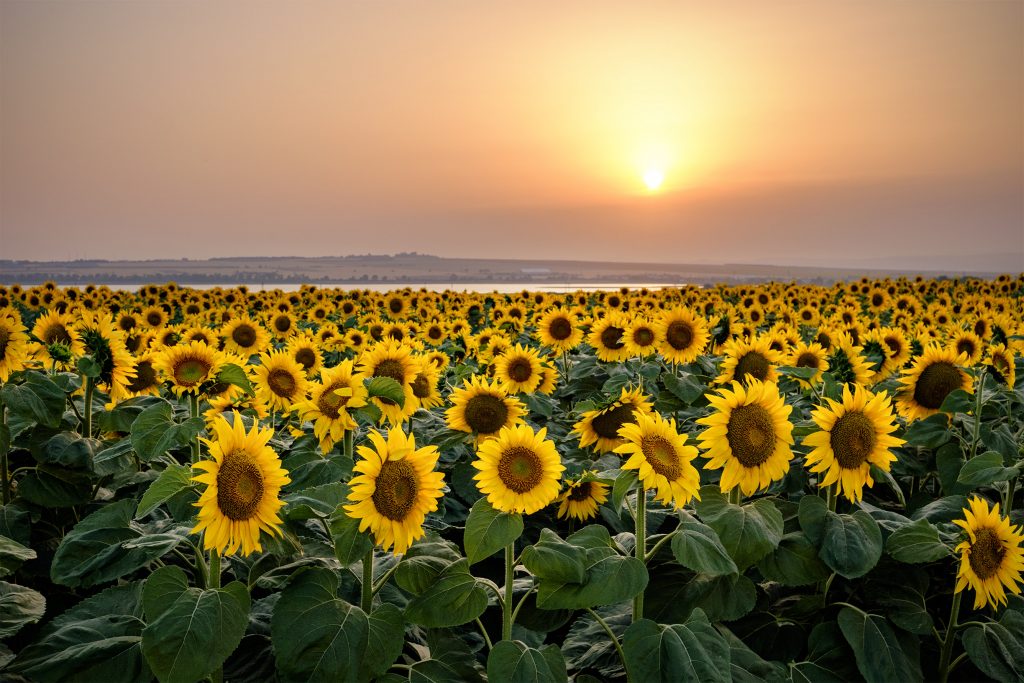
by Kathryn Donev
Sunflowers are so much fun. They are actually thousands of tiny flowers that bring joy in many ways. It’s neat to watch them follow the sun because of a trait called heliotropism. Eating sunflower seeds can lower rates of cardiovascular disease, high cholesterol, and high blood pressure. They are a good source of many vitamins and minerals that can support your immune system. And did you know that a sunflowers destroy contaminants of its surrounding soil, water and air?
Although sunflowers are Native to North America, Bulgaria is among the top 10 sunflower producing countries. As in various places in Polk County, Bulgaria is famous for their golden fields. And believe it or not, you can find Bulgarian sunflower seeds in any Dollar General labeled with the Clover Valley brand. When we were ministering together with Feeding God’s Lambs Summer Program at First Baptist Benton giving a presentation about the 6 Senses of Bulgaria, the kids even got to taste some. Fun.
With a multisensory trip to Bulgaria, we shared how the Holy Spirit is our Sixth Sense to guide and direct us in life and found in everything we touch, see, hear, smell and even taste. When we all come together, we can do great things, just as with the thousands of tiny flowers that come together to have the appearance of a unified flower. Let us be a purifier of our environments and always be reminded to follow the SON. Being consumed with the sixth sense of the Holy Spirit is good for the soul.
CYBER MONDAY: NEW KINDLE books from Cup & Cross
CYBER MONDAY 2021: Several of our best sellers now on Kindle for quick and easy read. Stay tune for our new titles in 2020…
Cup & Cross Ministries Outreach Recognized in Local News
Cup & Cross Great Kinder Joy EASTER Egg Giveaway
 Cup & Cross Ministries in corporation with the Polk County TN Homeschool Network has partner with the FLIP Kids Program in Polk County, TN to have a Great Kinder Joy Egg Giveaway. Over 200 chocolate eggs will be given away to the children in the FLIP Kids Program this Easter season. No need to social distance in this egg hunt, the hunt will be delivered to your door. Each egg has chocolate and it’s own “Incredibles” Movie character surprise toy along with scripture reminder of the Resurrections from Acts 26:8.
Cup & Cross Ministries in corporation with the Polk County TN Homeschool Network has partner with the FLIP Kids Program in Polk County, TN to have a Great Kinder Joy Egg Giveaway. Over 200 chocolate eggs will be given away to the children in the FLIP Kids Program this Easter season. No need to social distance in this egg hunt, the hunt will be delivered to your door. Each egg has chocolate and it’s own “Incredibles” Movie character surprise toy along with scripture reminder of the Resurrections from Acts 26:8.
“..it [is] incredible that God raises the dead.”
For more information go to cupandcross.com or polkhomeschool.com
Cup & Cross Ministries Offers Ministry Leadership Table
March 25, 2021 by Cup&Cross
Filed under Featured, Missions, News, Publication
Parts of Leadership Table will be available on Gumbo Podcast. For more information visit www.CupandCross.com
Cup & Cross Publications and Presentations
July 25, 2016 by Cup&Cross
Filed under Featured, News, Publication, Research
Cup & Cross Ministries International Presentations by Year:
2004 Postcommunist Believers in a Postmodern World at the Lilly Fellows Research Conference, Samford University
2005 Bulgarian Churches in North America at the Bulgarian Evangelical Alliance Annual Meeting – Chicago
2005 Internal Motivation at the Bulgarian Chaplaincy Association Quarterly Meeting – Bulgaria
2006 Introductory Chaplaincy Training Course at the Bulgarian Chaplaincy Association Quarterly Meeting – Bulgaria
2006 The Story of the Bulgarian Bible at Evangelical Theological Society – Washington, DC
2007 Bulgarian American Congregations: Cultural, Economic, Leadership Dimensions at Society for Pentecostal Studies
2009 Using Bible Technologies in a Censured Context: The Case of Postcommunist Bulgaria at BibleTech – Seattle
2009 How to Do Ministry on the Internet at Leadership Development Institute – Cleveland, TN
2010 The Untold Story of the Life and Ministry of Rev. Ivan Voronaev at Society for Pentecostal Studies – Minneapolis
2010 Using Computer Technologies in the Making of the New Bulgarian Translation of the Bible at BibleTech – San Jose
2010 Bulgaria: The Road to Democracy at the University of Nebraska – Lincoln, NE
2011 How to Broadcast Your Church Services for Free at Leadership Development Institute – Cleveland, TN
2011 The (un)Forgotten: The Story of Rev. Ivan Voronaev’s Children at Society for Pentecostal Studies – Memphis
2013 The Video Bible Project on the Internet at BibleTech – Seattle
2015 Historical and Doctrinal Formation of Holiness Teachings and Praxis among Bulgarian Pentecostals at Society for Pentecostal Studies at Southeastern University in Lakeland, FL
Cup & Cross Ministries International Publications by Year:
January 1994, “Going Up”, Christian News, Newspaper of the Bulgarian Church of God
1998-2003, Commentary on the Gospel of John for the Bulgarian On-Line Bible [http://www.bibliata.com]
September 2000, To Harvard and Back a Hundred Years Later (A Biographical Sketch of Stoyan K. Vatralsky)
May 2001, Pentecostal Primitivism Preserved
March 2002, Sunday School Lesson Series
April 2005-2010, Bulgarian Protestant History Series in the Bulgarian Evangelical Newspaper
April 2005-2010, About the Bible Series in the Bulgarian Evangelical Newspaper
Fall 2005, Postcommunist Believers in a Postmodern World in East-West Church & Ministry Report
Spring 2006, When East Met West in East-West Church & Ministry Report
July 2006, Roberts College in Pro & Anti Newspaper
July, 2007-2009 Letters from Bulgaria: A Series on Bulgarian Pentecostal Heritage in Pentecostal Evangel
2008 Analytical Overview and Church Planting Proposal for Bulgarian American Congregations Considering Cultural, Economic and Leadership Dimensions
2009 Pentecostal Primitivism
2010 About the Bible, a monograph on the history of the Bulgarian Bible
2011 Tetraevangelion: The Complete Works of the Gospel Writers in the New Bulgarian Translation Series (2007-2013)
2012 Bulgarian Study New Testament
2015 Complete Greek-Bulgarian Interlinear of the New Testament


